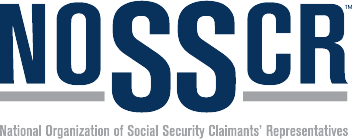Technology and Workplace Safety: Innovations Reducing Common Injuries
With industries facing an array of safety challenges, from manufacturing hazards to the ergonomic risks of office work, there's an urgent need for innovative solutions. Fortunately, the advent of cutting-edge technologies offers promising avenues to not only address these concerns but also to revolutionize how workplace safety is managed. This blog delves into the forefront of technological innovations, exploring how wearable devices, automation, artificial intelligence, and more are playing pivotal roles in reducing common injuries and fostering safer workspaces.
Scope of Workplace Injuries
When we delve into the realm of workplace injuries, we uncover a complex landscape that spans across industries, affecting millions of employees every year. The scope of these injuries is not just confined to the physical harm sustained by workers; it extends to the broader implications for businesses, including lost productivity, increased insurance costs, and the potential for long-term disability claims. High-risk sectors like construction, manufacturing, and agriculture are often highlighted for their elevated injury rates, but office settings and retail environments are not immune to their own sets of hazards, ranging from repetitive strain injuries to slips, trips, and falls.
The statistics on workplace injuries paint a concerning picture, with millions of incidents reported annually, leading to significant financial and emotional tolls. These injuries are not just numbers; they represent real people facing real challenges, from the physical pain of recovery to the financial strain of medical bills and lost wages. The diversity of these injuries reflects the varied nature of work environments, encompassing everything from acute accidents, such as falls from height and machinery-related incidents, to chronic conditions developed over time, such as musculoskeletal disorders from poor ergonomics or hearing loss due to prolonged exposure to loud noise.
Behind every injury is a story of how the incident could have been prevented, which brings to light the critical importance of workplace safety measures. However, traditional approaches to safety are increasingly being supplemented by technological innovations aimed at preventing injuries before they occur. As we move forward, understanding the scope of workplace injuries is the first step in addressing them, guiding efforts towards creating safer work environments through both established practices and emerging technologies.
Technological Innovations in Workplace Safety
The landscape of workplace safety is undergoing a transformative shift, thanks to a wave of technological innovations designed to mitigate risks and protect employees across various industries. This new era of safety technology harnesses the power of cutting-edge tools and systems to preemptively identify hazards, enhance training, and provide real-time monitoring and support, significantly reducing the incidence of common workplace injuries.
Wearable Technology
One of the most impactful developments in this domain is the advent of wearable technology. Devices such as smartwatches and fitness trackers now extend beyond personal health monitoring to serve as vital tools in assessing workplace conditions. These wearables can monitor vitals and fatigue levels, alerting employees and supervisors to potential health risks before they escalate into injuries. Even more futuristic are exoskeletons—wearable suits that augment human capabilities, enabling workers to perform physically demanding tasks with reduced strain and risk of injury.
Automation
Automation and robotics represent another frontier in workplace safety. Robots are increasingly taking on roles that involve hazardous conditions, such as handling toxic substances or performing tasks in extreme environments, thereby minimizing human exposure to dangerous situations. Moreover, automated safety monitoring systems can track conditions across a worksite in real-time, identifying potential hazards and triggering alerts to prevent accidents.
AI
Artificial intelligence (AI) and machine learning technologies are making strides in predictive analytics, offering the ability to analyze vast amounts of data to identify patterns that may precede accidents. This predictive capability can anticipate potential safety hazards, allowing companies to implement preventive measures in advance. AI-driven surveillance systems further enhance safety protocols by monitoring for compliance with safety gear usage and identifying unsafe behaviors or conditions in real-time.
VR/AR
The integration of virtual reality (VR) and augmented reality (AR) into safety training programs has revolutionized how employees prepare for hazardous situations. VR simulations provide immersive training environments where workers can practice navigating dangerous scenarios without any real-world risk, while AR applications overlay critical information and safety procedures directly onto the physical workspace, guiding employees through tasks with enhanced safety awareness.
These technological innovations in workplace safety not only aim to reduce the occurrence of injuries but also foster a culture of proactive safety management. By leveraging the capabilities of wearable technology, automation, AI, and immersive reality, businesses are not only safeguarding their employees but also enhancing productivity and efficiency, paving the way for a future where workplace injuries could become increasingly rare occurrences.
Challenges and Considerations
While technological innovations offer promising solutions for enhancing workplace safety, their implementation is not without challenges and considerations. These hurdles range from financial constraints and privacy concerns to the need for comprehensive training and adaptation among the workforce. Understanding these complexities is crucial for businesses aiming to effectively integrate new safety technologies.
1. Cost and Accessibility
One of the primary barriers to the widespread adoption of advanced safety technologies is the cost. Small and medium-sized enterprises, in particular, may find the initial investment in wearable devices, automation, AI systems, and virtual reality training modules prohibitively expensive. Additionally, the ongoing maintenance and updates required to keep these technologies effective can pose financial challenges over time. Finding cost-effective solutions and demonstrating a clear return on investment becomes essential for broader adoption.
2. Privacy and Ethical Concerns
The use of wearables and AI-driven surveillance systems raises significant privacy issues. Employees may have concerns about constant monitoring and the collection of personal data, such as health information or biometrics. Establishing transparent policies that respect employee privacy while ensuring safety is a delicate balance that organizations must navigate. Ethical considerations also extend to the potential for job displacement due to automation and robotics, highlighting the need for retraining programs and strategies to manage workforce transitions.
3. Training and Adaptation
The successful integration of new safety technologies requires not just financial investment but also a commitment to comprehensive training for employees. Workers must be equipped with the knowledge and skills to effectively use these tools, from understanding the functionality of wearable devices to navigating VR training programs. Moreover, fostering a culture that is open to embracing new technologies and adapting to changes in safety protocols is crucial for overcoming resistance and ensuring that these innovations achieve their intended impact.
4. Reliability and Unintended Consequences
Dependence on technology for safety measures introduces concerns about system failures, inaccuracies, or unforeseen consequences. Ensuring the reliability of safety technologies is paramount, as malfunctions or errors could potentially lead to new types of workplace hazards. Continuous monitoring, testing, and updating of these systems are necessary to address these concerns and adapt to evolving workplace environments.
5. Regulatory Compliance
Navigating the regulatory landscape associated with new safety technologies is another challenge. Compliance with occupational safety and health regulations must be ensured, and as technology advances, regulations may need to evolve to address new methods and tools for ensuring worker safety. Keeping abreast of legal requirements and engaging with regulatory bodies can help organizations implement these technologies within the framework of existing and future regulations.
While the benefits of technological innovations in enhancing workplace safety are clear, addressing the accompanying challenges and considerations is essential for their successful and ethical implementation. Balancing cost, privacy, adaptation, reliability, and regulatory compliance will be key to harnessing the full potential of these technologies in creating safer work environments.
The Future of Workplace Safety Technology
As we stand on the brink of a new era in workplace safety, the future is poised to unfold a tapestry of innovations that promise to redefine the very essence of occupational health and safety. This imminent future is characterized by a seamless integration of technology into the fabric of workplace safety measures, driven by advancements that are currently in their nascent stages but are expected to mature and proliferate across industries globally.
Envision a workspace where every element, from the air quality to the ergonomic setup of workstations, is continuously monitored and optimized for employee well-being. In this future, wearable technology evolves beyond mere fitness tracking, becoming an integral part of the worker’s uniform, capable of predicting potential health issues before they manifest. These devices could offer real-time feedback on posture, repetitive motion, and environmental exposures, significantly reducing the incidence of chronic musculoskeletal disorders and other occupational illnesses.
The role of artificial intelligence and machine learning in predicting workplace hazards is set to expand, transforming safety protocols from reactive to predictive. By analyzing patterns in data collected from countless sensors across work environments, AI could anticipate potential accidents, allowing for interventions that prevent them from ever occurring. This predictive approach, underpinned by big data analytics, could dramatically reduce workplace injuries and fatalities.
Automation and robotics, while already beginning to make workplaces safer by undertaking dangerous tasks, are expected to become more sophisticated. Autonomous machines could work alongside humans, taking over not just the physically hazardous tasks but also those that are dull or repetitive, thereby reducing human error and exposure to risk. This collaboration between humans and machines, guided by advancements in robotics and AI, will not only enhance safety but also productivity and efficiency.
The immersive training experiences provided by virtual reality and augmented reality technologies are likely to become more widespread, offering employees the opportunity to engage with potentially dangerous scenarios in a completely safe, controlled environment. These training modules can be easily updated and customized to reflect real-world changes in equipment, procedures, or hazards, ensuring that safety training is always relevant and up to date.
However, the future of workplace safety technology also necessitates a paradigm shift in organizational culture and policy. As these technologies become more embedded in daily operations, fostering a culture that prioritizes safety and is open to adopting innovative solutions will be crucial. Moreover, regulations will need to evolve alongside technological advancements to ensure that they enhance rather than inhibit safety improvements.
The future of workplace safety lies in the harmonious blend of technological innovation, cultural shift, and policy evolution. As we move forward, the promise of a safer workplace becomes not just a possibility but an impending reality, heralding an era where technology and human ingenuity converge to protect the most valuable asset of any business—its people.
Conclusion
As we navigate the tech landscape, the future holds a promise of safer work environments where technology not just mitigates risks but anticipates and neutralizes them before they can cause harm. Embracing these innovations with thoughtful consideration will pave the way for a new era of workplace safety, characterized by an unwavering commitment to protecting and enhancing the well-being of employees across all industries.
Cole, Fisher, Cole, O’Keefe + Mahoney is Central California’s leading workers’ compensation and social security disability law firm. With over 30 years of successful experience, we are committed to securing maximum benefits for our clients in the Fresno, California area. Schedule a free consultation today.
© 2025 Cole, Fisher, Cole, O’Keefe + Mahoney
Making a false or fraudulent workers’ compensation claim is a felony subject to up to five years in prison, or a fine of up to $150,000 or double the value of the fraud, whichever is greater, or by both imprisonment and fine.







